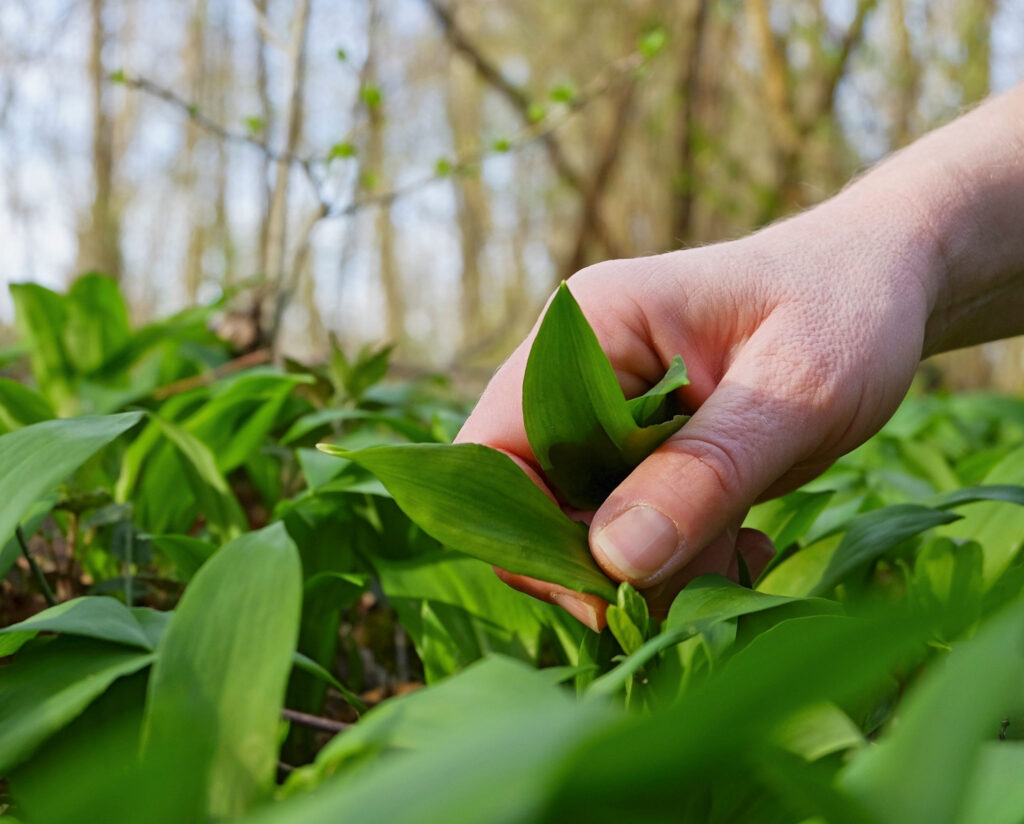You’ve probably seen wild garlic a few times as you hike in deep trails or even just around the park. The sight and smell of these wild garlic leaves alone will make you want to pick some to bring back home for your next meals!
But wait, is wild garlic safe to eat in the first place? Read on as I talk about wild garlic and if you can eat it, whether raw or cooked.

Is Wild Garlic Safe to Eat?
To be straight to the point: YES, wild garlic is safe to eat and can be used in many dishes, may it be pesto, kimchi, or your next stir-fry! You can eat all parts of the wild garlic, provided that they are washed well and used within a few days (you wouldn’t want to eat rotten vegetables).
This is a very diverse vegetable, just like the ones you buy from the supermarket or plant at home. You can even pick the fresh young leaves to eat raw or cool the older leaves. Eat the sweet-tasting stems or the edible flowers that give your salad an upgrade, or the wild garlic bulbs itself, which would taste like a punchier spring onion.
That said, the bulbs aren’t as great as cultivated garlic and won’t store well once harvested, so be sure to eat it as soon as possible or store it properly. Store wild garlic by blanching and freezing the leaves or blend the plant in olive oil and pour into ice cube blocks, placing it in the freezer for a ready supply whenever you need it.
Heck, even the seeds and roots can be eaten! In fact, wild garlic has a host of benefits you can take advantage of, as it has antibacterial, antiseptic, and antibiotic properties. Not only can you consume it for better tasting dishes, but it also has health benefits, being used as alternative medicine or natural remedies to various conditions even way before our time.
Just make sure that you don’t mistake it with poisonous plants, as the early leaf growth may be mistaken for Lily of the Valley or Lords and Ladies. You can know for certain by crushing the leaves, as wild garlic would smell like onions, while poisonous plants will not.
Furthermore, think about any conditions you have. If you are on blood-thinning medication or are at risk of blood-thinning from medical conditions, it’s best not to consume garlic. Also, if you’re allergic to the onion family, don’t eat it as this triggers an allergic reaction.
Is It Legal to Pick Wild Garlic?
This depends on the state you’re from and if you are on national parks. For instance, in the UK, it is legal to pick wild garlic as long as you gather the above-ground parts. If you want to use the roots, you’ll need the landowner’s permission, as it is illegal to uproot wild garlic in the UK.
However, harvesting the stem and seeds is another story, which is why you need to check with your area’s rules or laws when it comes to foraging.
You can find wild garlic growing along hedgerows, riverbanks, or deciduous woodland. There may be distribution maps available in your area to see if you can find some nearby for harvesting or foraging. The leaves are best eaten in the early spring, the flowers during mid-spring, and the seeds during the late spring to early summer.
Wrapping It Up
There are many things you should not be picking and eating when it comes to walking around the woods or trails. With wild garlic though, they are safe to eat, being edible and versatile. As long as it’s legal in your area and it’s not near any poisonous plants, then, by all means, pick away and use it on your next dish!
I hope that my article answered your question, ‘is wild garlic safe to eat?’ Now that you know the answer, learn more about what else you can grow or harvest in the wild! Have fun!